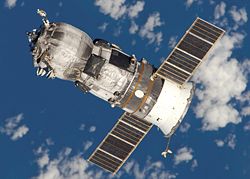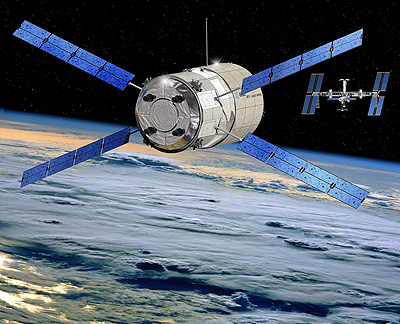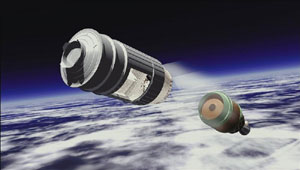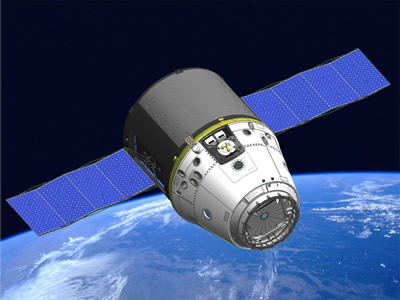Who are the players that take a central part in the space transportation industry, which players will enter the market in the coming years and what does the future hold
Following the growth of the global space market, sub-industries of related space services such as satellite refueling, space transport, on-orbit repairs and other services are developing.
Most of the services are only on paper, but this does not prevent investors from putting most of their money on the table to "be there" when the demand for these services increases. Many will say they are dreaming, but research bodies are talking about turnovers of billions in the coming decades for these new industries. Moreover, if we examine the forecasts for the space market given in the previous decade, we will see that the market exceeded expectations.
Transportation in space
Humanity is taking big steps towards space, we already have teams living on the International Space Station, and according to the goals set in recent years, it seems that the day when we will have bases on the moon and Mars is not far off. In order to sustain these space pioneers, they must be continuously supplied with food, drink, air and equipment.
This need, according to futurists and space researchers, will be met by special supply spacecraft whose entire function will be to deliver supplies and equipment to destinations in space.
The Russians were the pioneers in the field

The Russians were the first to realize that launching manned spaceships for the purpose of transferring supplies is an expensive and unprofitable operation. A single-use unmanned spacecraft would be cost-effective since it would not require the installation of life support systems, heat protection systems and equipment used for safe re-entry into the atmosphere.
In the 70s, the unmanned "Progress" spacecraft were developed that operated alongside the manned Soyuz spacecraft. The Progress was a disposable spacecraft that burned up in the atmosphere at the end of its use. It served the Russian space stations for generations with great success and today it serves the International Space Station, even after the American space shuttle fleet is retired, the Progress spacecraft will continue their work.
The Columbia disaster made the world realize that the time of robotic spaceships has not yet passed, and they will remain with us for a long time. At the same time, the Progress is a spacecraft built more than 3 decades ago, so it does not always meet today's needs. Although the Progress underwent several upgrades, it remained a spacecraft limited in its capabilities.
The Europeans entered the field

The Europeans have reached a strategic decision to develop and build the cargo spaceships of the next generation - they will be larger and completely independent. The ATV (Automated Transfer Vehicle) was developed by the European Space Agency not only as supply spacecraft but much more.
The ATV spacecraft has a compressed chamber that contains air at the pressure prevailing on the International Space Station, so that it can be used as a laboratory and extension to the International Space Station and not just a supply spacecraft.
The ATV was built with advanced technologies, it has a command and control system that allows it to automatically orient itself in space, find its position in space, calculate an appropriate path, reach the destination on its own and perform automatic rendezvous and docking maneuvers in space without any human intervention - all this is due to laser systems that provide precision Unprecedented.
The first ATV spacecraft, which was called "Jules Warren", was launched in March 2008 and there is no doubt that it is a first-rate leap in the field of transportation in space.
The Japanese are not late to come

It turns out that not only the Europeans see the future in the field, the Japanese are also interested in entering the field of transportation in space.
Similar to the European ATV, the Japanese are developing the HTV (RT H2 Transfer Vehicle), cargo spacecraft that will deliver equipment and supplies to the International Space Station. The first launch of the HTV is scheduled for summer 2009.
The Japanese space program is in close contact with the local industry, so for example in April 2007 the H2A launchers were privatized and they were purchased by "Mitsubishi Heavy Industries Ltd". The participation of local companies allows the country to leverage technological knowledge, promote the private sector and market Japanese space solutions. Already today Mitsubishi markets the HTV as a service Available to anyone who can afford it.
Private initiatives

There are several private initiatives to build cargo spacecraft. The most promising project is "a dragon” of SpaceX. The company intends to build a spacecraft to transport cargo and people. The spaceship is based on a cabin without air pressure for transporting cargo and a compressed cabin with air pressure for transporting people and cargo.
In 2009 there will be 2 test flights of 5 hours each and in 2010 a cargo spacecraft will be launched to the International Space Station on a 3-day mission.
The future of transportation in space
Today, the Progress spacecraft carry out 4 launches a year and are considered a workhorse that will not go off the stage anytime soon. The first European ATV (Jules Warren) proved itself but the European Space Agency plans to launch only one spacecraft per year and produce no more than 7 spacecraft. Since the Japanese spacecraft and the private initiatives are still in the development stages, it seems that the Russians will continue to launch the progress for a long time to come.
The Americans have stated that they are interested in testing the human ability to live on other planets, but since the flight to Mars is too far away, the first changes will be made in a new base on the moon that will be permanently inhabited, similar to the International Space Station. The implementation of the plan means contracts worth millions of dollars to companies that will provide transport services of equipment and supplies towards the moon.
Already today, billions of dollars are invested in the maintenance of the International Space Station, if a manned base is added on the moon, more initiatives will probably emerge that would like to take part in the human space celebration.

6 תגובות
It's a very rosy future considering the fact that soon the oil is going to run out and there is still no replacement (unless the E-cat will be able to launch flights into space…..)
A question for Rami when the Fors spacecraft will be launched to the nearest space station thanks